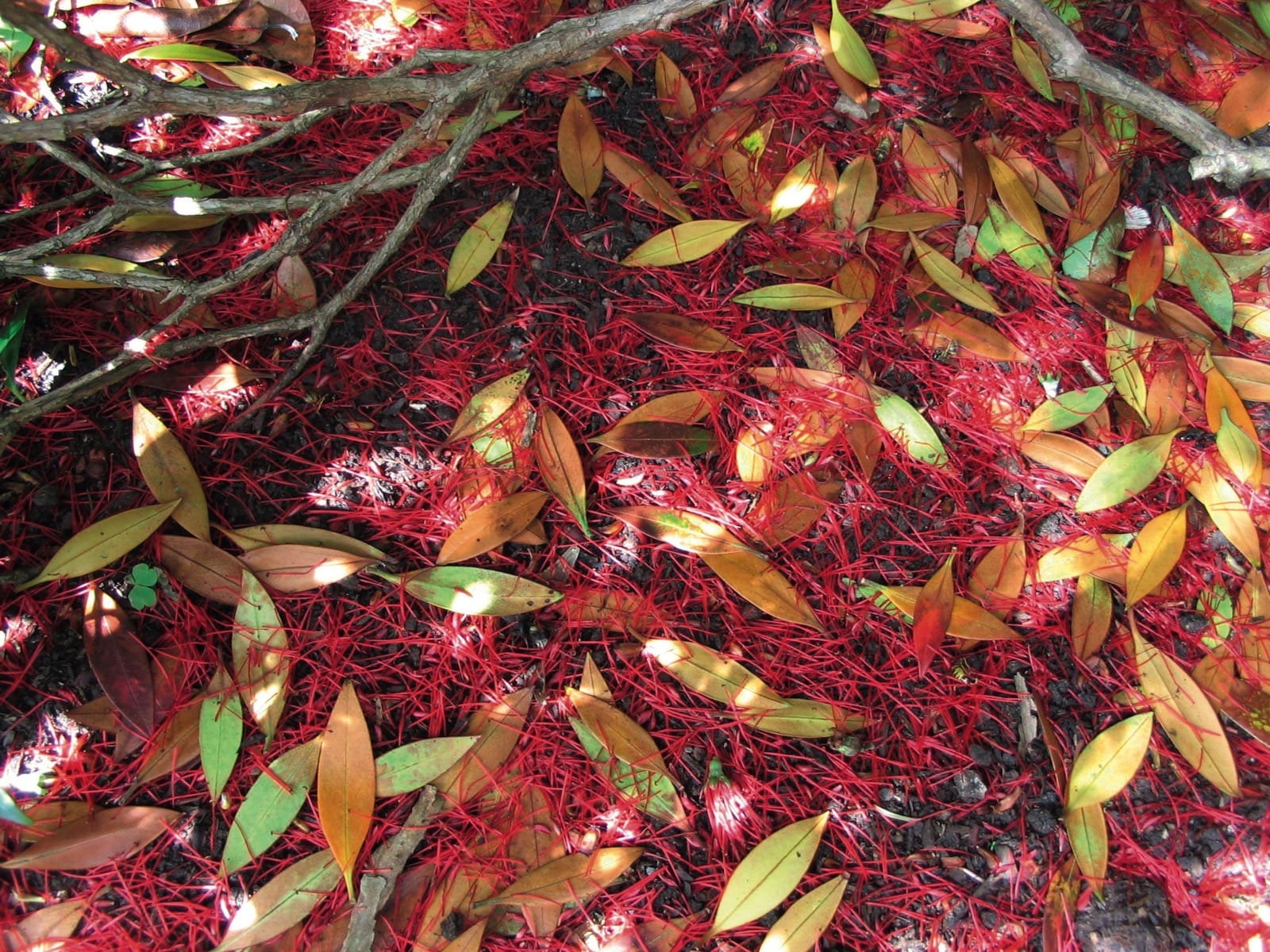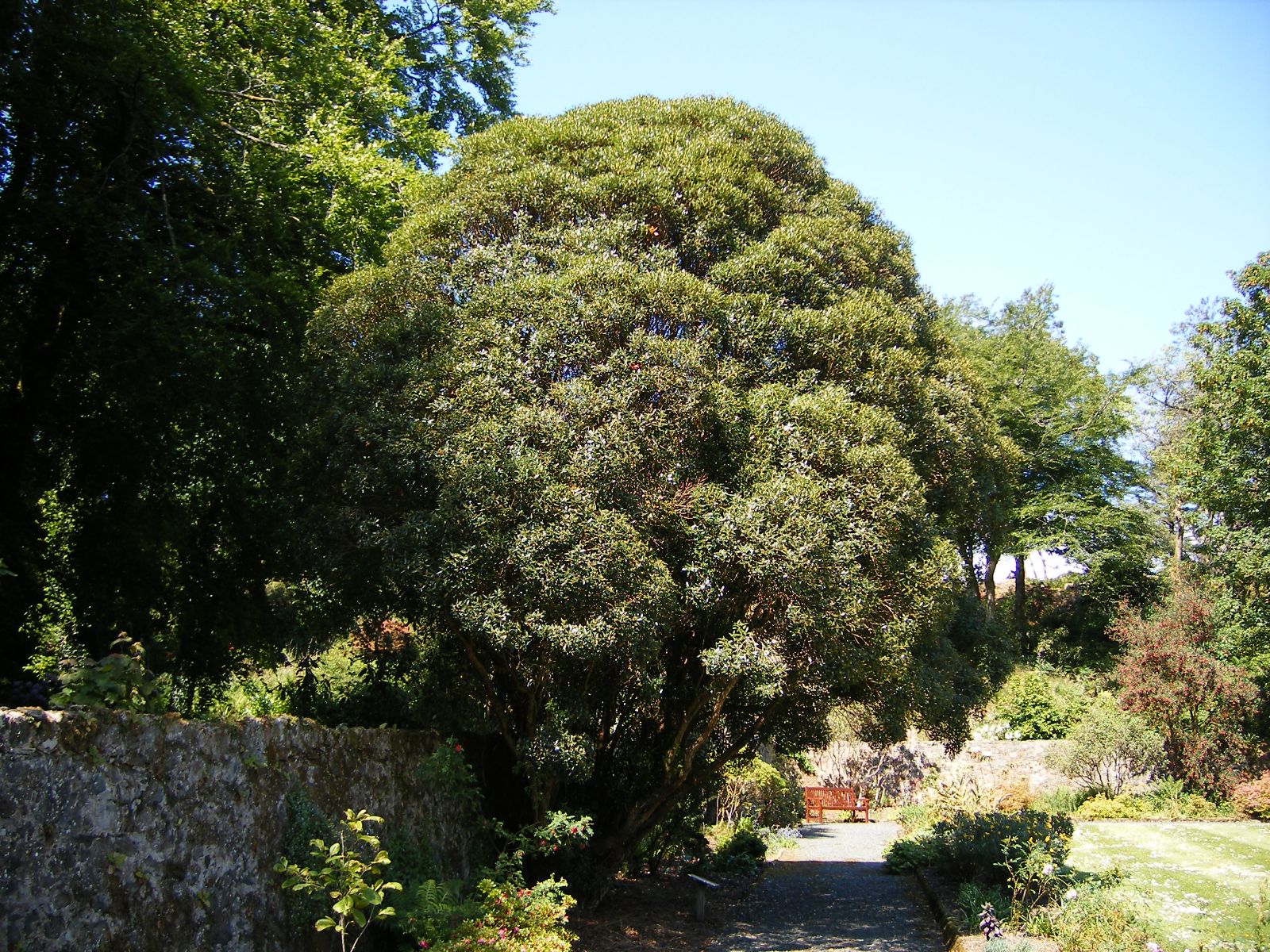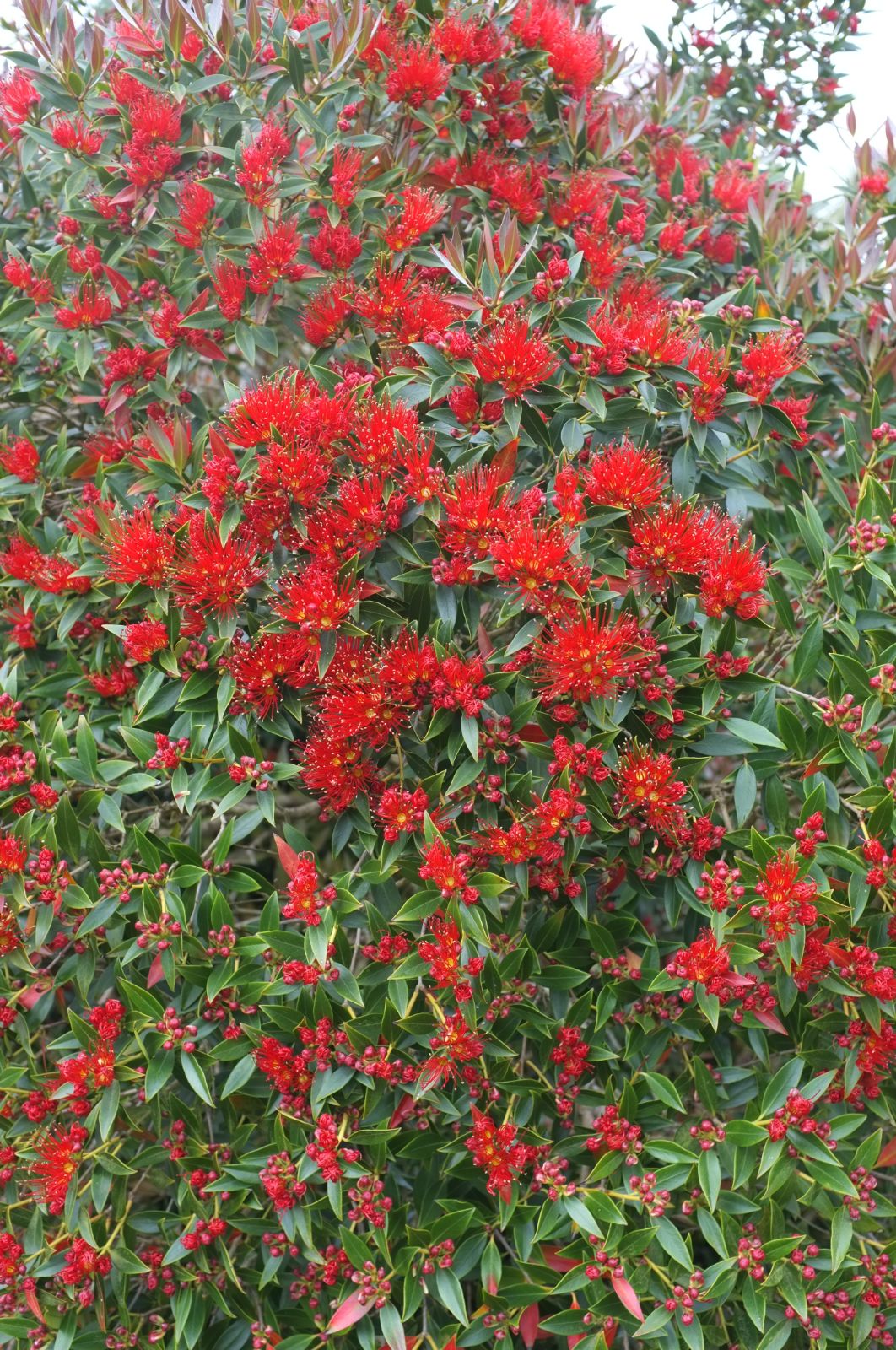Metrosideros umbellata
Credits
Article from New Trees by John Grimshaw & Ross Bayton
Recommended citation
'Metrosideros umbellata' from the website Trees and Shrubs Online (treesandshrubsonline.
Other taxa in genus
Tree to 15 m, 1 m dbh or more. In the wild, large trees produce adventitious roots which descend from the canopy to root into the ground. These roots can fuse with the main trunk, greatly increasing the girth of the adult tree. Bark papery. Branchlets glabrous. Leaves evergreen, leathery, (2.5–)3–5(–6) × (1–)1.5–2 cm, elliptic to lanceolate, initially covered in silky hairs, later glabrous, secondary veins indistinct, margins entire, apex acute to rounded; petiole ~0.5 cm long. Inflorescences extremely variable in structure; flowers may be solitary or paired, but are always axillary. Typically, the vegetative bud at the tip of a flowering stem aborts; some of the nodes below the aborted bud produce flowers (either singly or in pairs); peduncles to 10 cm long. Flowers hermaphrodite, scarlet; hypanthium cup-shaped, initially covered in silky hairs, later glabrous, petals suborbicular, stamens numerous, ~2 cm long. Capsule woody, urn-shaped, ~0.8 cm long, completely enclosed in the hypanthium. Flowering November to January (New Zealand). Wardle 1971. Distribution NEW ZEALAND: Auckland Is., North Is. (Great Barrier Is., Little Barrier Is., Coromandel Range, Mt. Te Aroha, Tararua Range), South Is. (predominantly north, west and southern coasts), Stewart Is. Habitat Intolerant of dense vegetation; generally found on poor soils or in harsh, exposed sites between 0 and 1100 m asl. USDA Hardiness Zone 9–10. Conservation status Not evaluated. Illustration NT521, NT522. Cross-reference K306.
Metrosideros umbellata could be planted with some expectation of success anywhere along the western coasts of Europe, but perhaps only within earshot of the sea. The finest specimen known in our area is at Ilnacullin (Garinish Island), off western Cork, currently 14 m tall, but there are others on the mainland of Ireland at Bally walter Park and Mount Stewart, both in Co. Down (Johnson 2007). On mainland Britain the best known is at Logan, planted in 1959. This has grown slowly but steadily to form a wider than tall multistemmed specimen, approximately 6 m in height. When seen in July 2006 it was just finishing flowering but the ground below the tree was covered in a mass of fallen stamens and yellow leaves and gave an indication of how spectacular it must have been when in full flower. The leaves are a glossy, brownish dark green, with a reddish or purplish flush on their paler undersides. There are younger trees at Logan. An example of the tolerance of the species is a 2.8 m bushy individual growing slowly in Tim Pyner’s garden at Southend, Essex (Johnson 2007): this suggests that it could be tried in sheltered gardens all along the southern coast of England.








